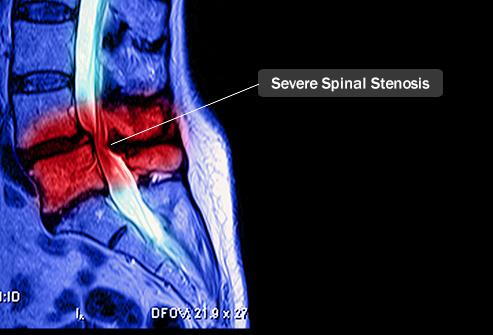
Stenosis can be a very complicated and the debilitating condition. Not only on your spinal cord but also your spinal nerves go out down your arms and legs. So what is stenosis? Stenosis is when the canal which is the space where either your spinal cord or your spinal nerves pass through decreases in the amount of space within that hole or canal.
Now there are two types of stenosis. The first one is spinal stenosis, which is around your spinal cord. Many times, the stenosis is caused by either what they call hypertrophy of ligaments, a disc herniation/bulge, or even degenerative arthritic spurs. When the stenosis is on your spinal cord, it reduces how the flow coming from your brain down your spinal cord to your glands, organs and tissues. This is as I have seen in the past, is very serious, because it can be very debilitating, effecting your activities of daily living, depending upon what severity it is.
Secondly, foramina stenosis is when the canal that goes out of your vertebra going to your arms in your hands or legs to your feet is reduced. Foraminal or nerve stenosis, affects your shoulders, arms, hands, and your hips, legs and feet. Many times when the stenosis is severe, it affects the muscle strength causing weakness and tingling and or numbness sensation that you may have.
So what are the differences in the severity of stenosis. This is how I've always explained it. If you have a hallway that you're trying to walk down with you and say another person and you have what they call mild stenosis, you can still walk side-by-side. It may be a little cramped but you'll still will be able to walk down the hall. With moderate stenosis, you were going to be extremely cramped and may have some difficulty walking down the hall, side-by-side or you may have to have a very close experience with each other. The last is what they call, severe spinal stenosis. This is when the space is significantly decreased and compresses and or chokes off the spinal cord which is very serious. In severe stenosis, you start to lose function, strength, and the ability to do just simple and daily activities.
Regarding if chiropractic can help with the three different types of mild, moderate or severe stenosis. In my 31 year experience, chiropractic has been able to show improvements and help people with mild and moderate spinal and foraminal stenosis. The true problem is when it's moderate to severe that is when typically what they do is physical therapy, steroid injection, but most of the time I've seen, especially with severe spinal stenosis is that you were going to require a surgical intervention or procedure. So there you have it, chiropractic maybe able to help with spinal or foramina stenosis when the severity is of mild or moderate. But with the more extreme complications of severe, you probably require a surgical intervention. Thanks for reading, Dr. Joe.
